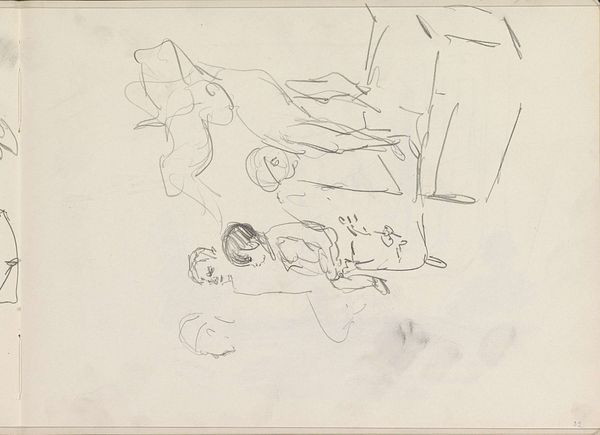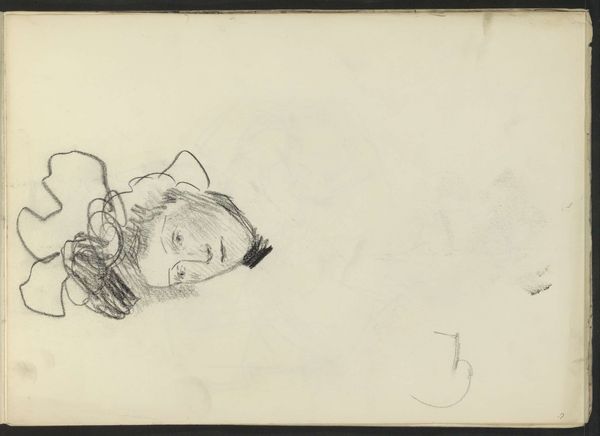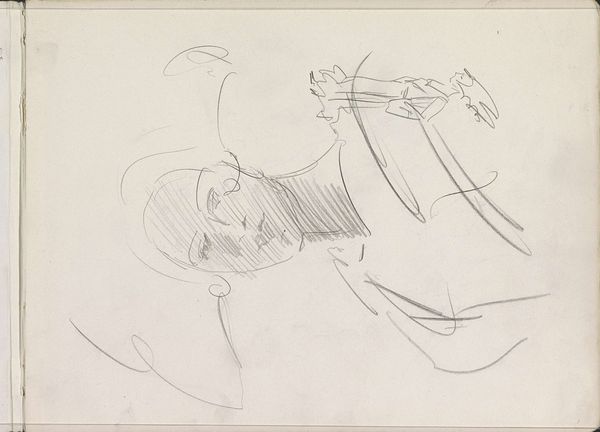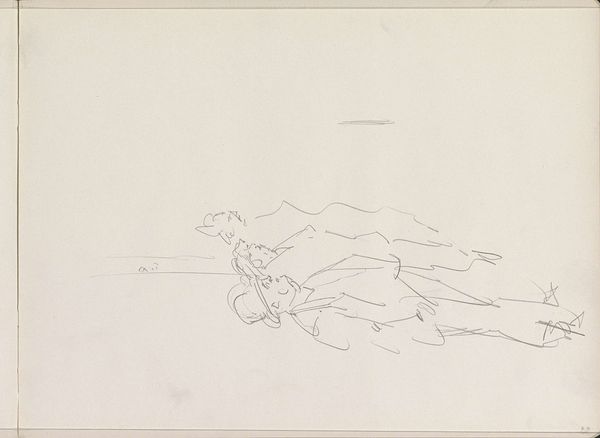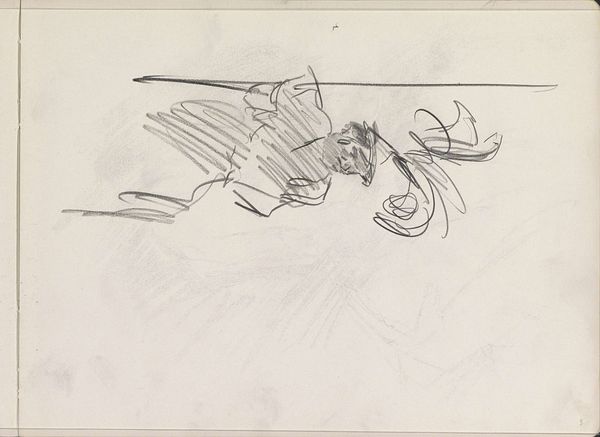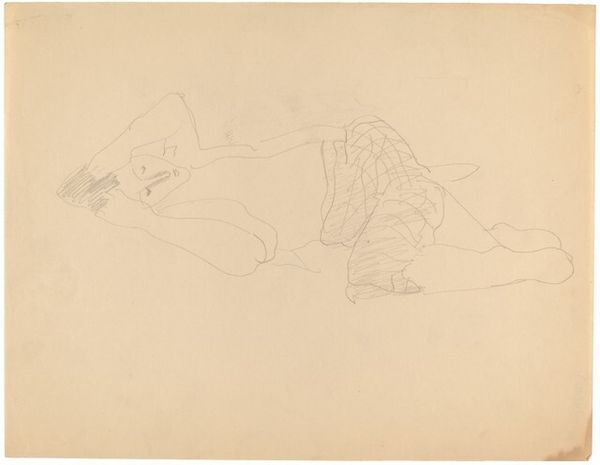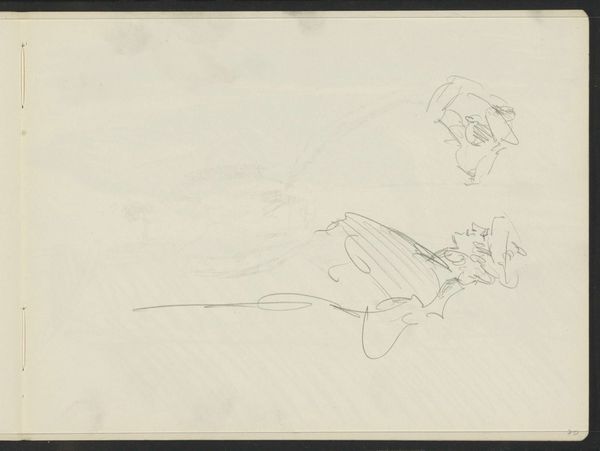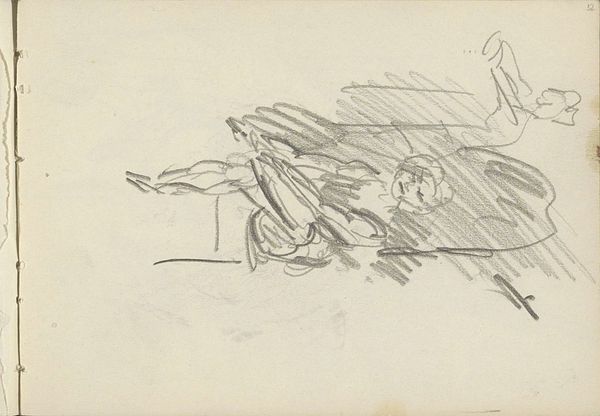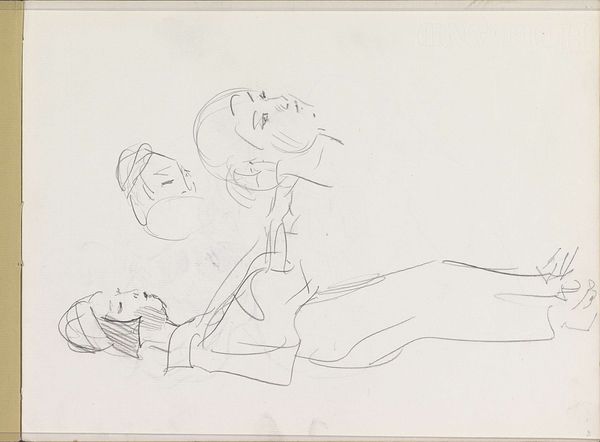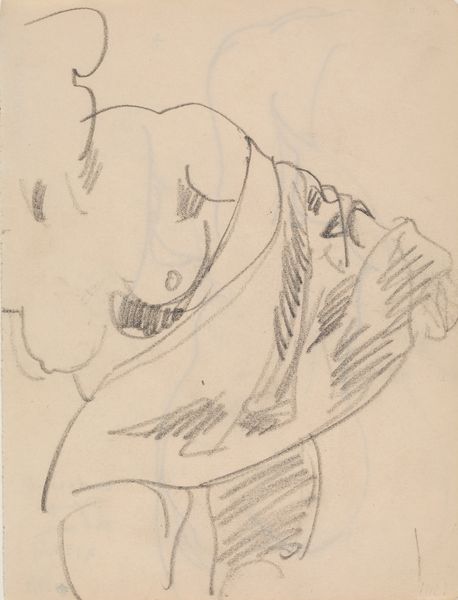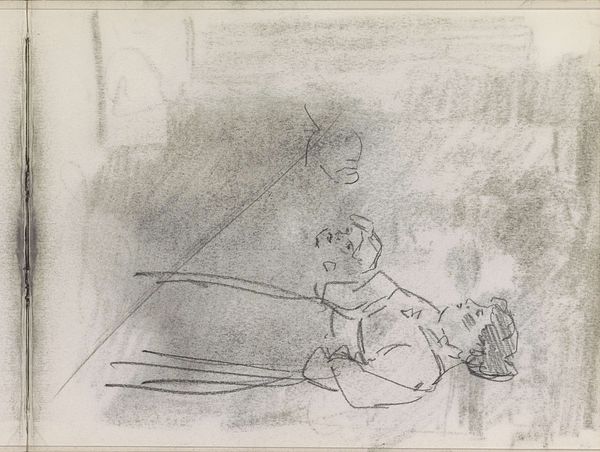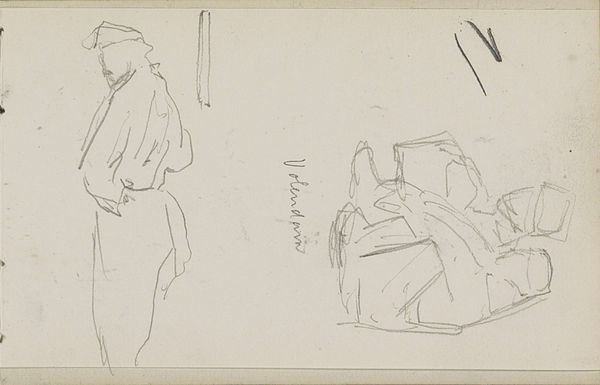
drawing, pencil
#
drawing
#
ink drawing
#
pencil sketch
#
romanticism
#
pencil
#
realism
Dimensions: 213 mm (height) x 269 mm (width) (bladmaal)
Curator: Welcome. Here we see Johan Thomas Lundbye's "Studier af seletøj," or "Studies of Harness," from 1847. It’s rendered in pencil, a simple, almost austere medium for this Danish Golden Age artist. What is your first take on it? Editor: Spare, I'd say. The thin lines evoke fragility. I wonder what kind of pencil he used; you can see the various applications from heavier dark marks that describe form to more wispy applications to create tone. Curator: Indeed. Harnesses symbolize connection, control, the binding of animal power to human will. We often see this harnessing represented by patriarchy and royalty through emblems or regalia. Consider the loaded significance of equestrian statuary and related battle symbolism in historical power dynamics. Editor: Well, you are describing power and hierarchy, and I see precisely rendered objects, likely produced through particular processes, but I cannot shake the feeling it is also rather mundane: horse tack just lying about in a stable. It takes the object out of active use and represents work in its less celebrated downtime. We have left behind some historical narrative—it is about something so humble that the study would usually have no other importance beyond the thing depicted, which in its original making would have served another practical end in the real world. Curator: Yet Lundbye made it art, imbued with his romantic vision. The placement of these studies in an artwork rather elevates the image to something else. Note also how his lines, though precise, also contain an inherent liveliness. What about the raw materials? What do you think he's working with here? Editor: The creamy quality of the paper provides a certain warmth, a soft support to the precise details etched on the surface. It might be laid paper, possibly local sourced, a nice counterpoint to the manufactured aspect of the depicted object, that the subject becomes grounded again, reminding the user of our dependence on locally produced and found things for art making. It reveals what may be the more obvious connection to earth. Curator: I like how you brought us back to the earth there. For me, these drawings offer more than simple records of material things. Editor: Right. I appreciate how you connect the subject of equine gear with societal power, and I understand its possible role in broader political contexts. Yet I think this speaks volumes for itself simply as it stands. It is quite a beautiful drawing with sensitivity towards material.
Comments
No comments
Be the first to comment and join the conversation on the ultimate creative platform.
